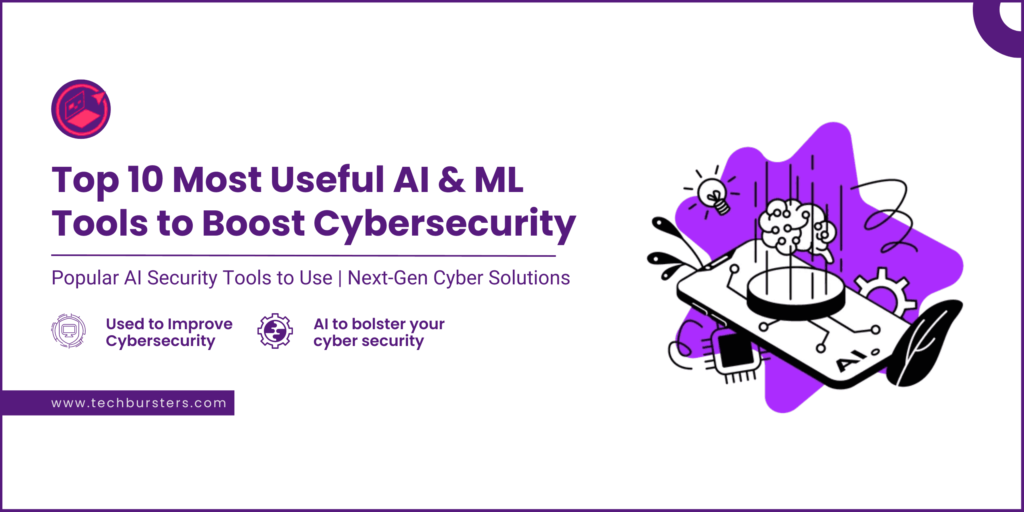
Cybersecurity is one of the primary issues and challenges for any company, large or small, given the growing internet usage rate. Cyberspace issues are complicated and dynamic, and standard security solutions are frequently insufficient. However, AI has emerged as the silver bullet in matters concerning cybersecurity. AI tools enable to processing of vast data, defining patterns, as well as forecasting threats with potentiality far beyond any previous level. In this blog, we will look at the ten AI applications that impact cybersecurity and how they protect organizations from cyber criminals.
1. Darktrace
Darktrace is a great tool for identifying threats because when the system learns your network’s normal behavior, any trends that might suggest the existence of a threat can be quickly flagged. Some of the exciting threats can be found using machine learning algorithms while Darktrace can be used for preventive measures. Its self-learning nature means that Darktrace learns the nature of your organization’s network and protects it against emerging threats.
2. CrowdStrike Falcon
Falcon is a Cloud Security Platform that leverages AI to provide comprehensive endpoint protection against various threats such as malware, ransomware, and APTs. Real-time threat identification and response are highly dependent on Falcon’s AI analytics. It also provides insights related to unknown vulnerabilities and indicates some suspicious activity. You can learn more about AI and its applications by taking an Artificial Intelligence Course in Chennai.
3. SentinelOne
SentinelOne offers a robust AI-enabled endpoint protection solution that embeds behavioral AI within a range of automated response actions. Its AI algorithms are designed to identify and respond to various threats across endpoints, cloud environments, and IoT devices. Threat hunting, combined with its automated remediation processes, ensures that any possible threats are handled rapidly and efficiently.
4. Vectra AI
Vectra AI specializes in network detection and response using machine learning and AI to scan through network traffic for hiding threats. Its platform gives real-time threat detection and automated response to minimize the potential impact of a security breach. Enabling a look deeper into the network for threats that would otherwise remain hidden with its AI-driven approach, Vectra helps these organizations.
5. Sumo Logic
Sumo Logic is a cloud-based machine learning security analytics and visualization tool. It helps to monitor and prevent security threats by gathering and analyzing log and event data for the entire organization. Its AI features help improve threat recognition since it identifies trends and outliers that represent a threat to network security.
6. IBM QRadar
IBM QRadar integrates AI to help improve threat detection and response. It brings actionable insights by correlating its AI-driven analytics from logs across the network, user activities, security events, and a host of other sources into one platform. QRadar threat intelligence gives better visibility to potential dangers and enables organizations to be better equipped for any security incident that might strike.
7. CylancePROTECT
CylancePROTECT offers proactive endpoint protection powered by AI and machine learning against malware and advanced cyber threats. In sharp contrast to the traditional antivirus solutions driven by signatures, CylancePROTECT uses AI algorithms to analyze file behaviors to identify and describe any potential threat before its activation. Such a predictive approach has a check on threats even before they get into a network.
8. Fortinet FortiGuard
Fortinet’s FortiGuard uses AI and machine learning to improve threat intelligence through advanced threat detection. It offers end-to-end security services that involve real-time threat intelligence, automated response, and continuous monitoring. The AI capabilities within FortiGuard help identify emerging threats and enable the security posture of any organization to be resilient and strong.
9. LogRhythm
LogRhythm incorporates threat intelligence and machine learning alongside SIEM to offer comprehensive security solutions against threats. This capability uses machine learning to analyze log data and highlight deviations that form the basis of potential security issues. With AI incorporating strategy at its core, LogRhythm allows enterprises to identify attack paths and improve responses to them, consequently decreasing the possibility of data breaches or security issues.
10. Exabeam
Exabeam provides a Security Information and Event Management solution that leverages intelligence and learning to address threats. With the option of producing complex analyses and auto-responding to incidents, the platform allows an organization to develop a quick baseline of normal operations to address any potential security threats. Integrated AI in Exabeam enhances accuracy, speed, and efficiency when handling security events. You can be proficient in AI technology with the help of FITA Academy which provides an Artificial Intelligence course.
Conclusion
Regarding the dynamic nature of cyber threats, the implication of AI tools in cybersecurity is quite important for an organization to be safeguarded against threats to digital assets. Fronting technology in cybersecurity, previous AI tools offer advanced threat detection, automated response, and actionable insights to improve security at large. An organization can demonstrably improve its ability to detect, respond, and mitigate possible threats by integrating these AI-driven solutions into its cybersecurity strategy. The only way to outsmart these cybercriminals will be by being proactive, and that will require the following key AI tools as the digital scenery continues to change.
